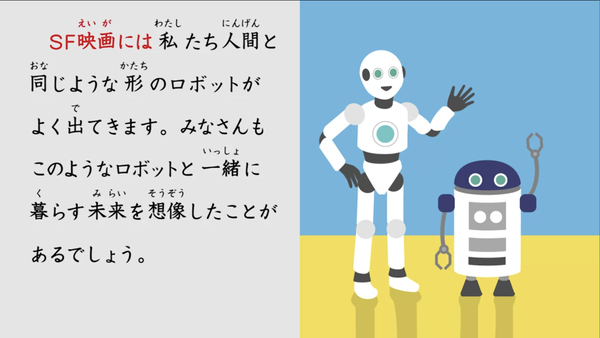Let’s Read! Learning Japanese through Science & Technology
Language learning is broadly defined as developing the ability to communicate in the second/foreign language, and in this context includes: Language learning for specialists. Our Japanese language courses are developed with the intention of equipping international students with language skills that are focused on their research studies as well as living in Japan.
Developing the course material
It all starts with developing a textbook. From selecting specific engineering topics, writing main texts, developing supplementary materials to structuring the contents, Professor Furuichi and her team had devoted their time and conducted numerous discussions both online and offline. They chose not to rely on existing Japanese language textbooks such as Genki and Minna no Nihongo, which are the two most common Japanese language textbooks for teaching and individual study across the world, but to start from scratches, believing in the role of authenticity in teaching foreign language.
The main texts are adaptations of articles published in Ttimes!, a biannual newsletter written by student assistants of the Faculty of Engineering covering interviews and columns. The main texts not only serve as a brief introduction to the topic involved, but also cover intermediate level vocabulary, grammar and idiomatic expressions. Each main text comes with a text video. Text videos are illustration videos with animated karaoke subtitles and narration to introduce module topics and keep students engaged. Every module has a clear and specific learning objective that students can keep track of their learning easily.

Difficulties faced
This project first started in 2020 when COVID-19 emerged as a global pandemic. Video shooting was extremely difficult at that time as only a limited number of people is allowed in one room for adequate physical distancing (in addition to guest speakers’ tight schedule). For the first time, we decided to utilise Zoom recordings to produce interview videos. The video qualities were obviously not ideal when compared to filming in a studio, yet the production team had make the best of the situation. Besides, as the course content is surrounded by engineering topics in everyday life, extreme caution is required to ensure the accuracy of information given by the interviewed researchers, and to clear copyright permissions for images and charts inserted in presentation slides.
Thanks to everyone’s contribution, the course is well-received and the number of enrolment is steadily increasing. More learners are moving to part two and opts to obtain a certificate of completion. We hope the course does push you to learn Japanese.
Part 1: https://www.coursera.org/learn/japanese-language-1
Part 2: https://www.coursera.org/learn/japanese-language-2

